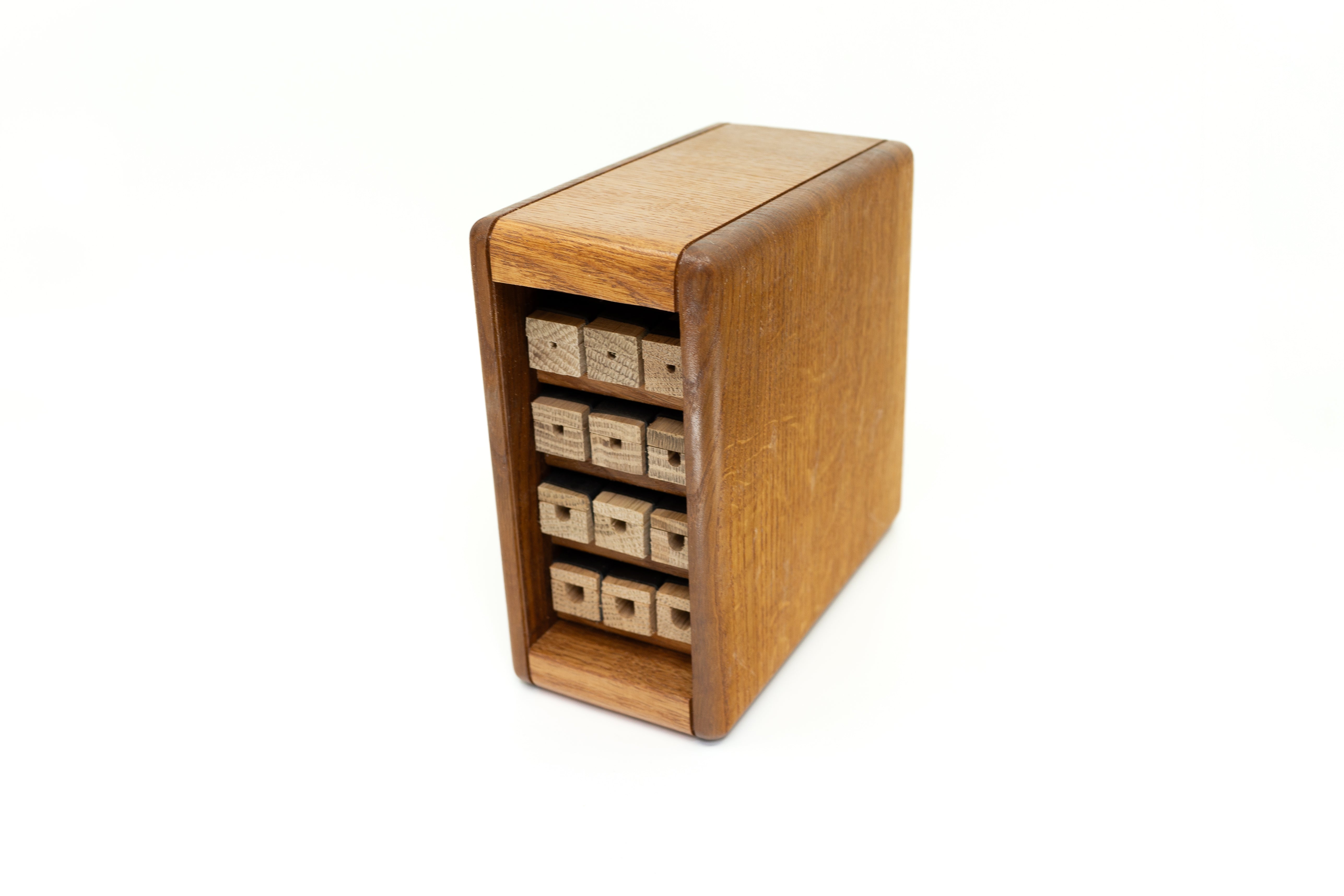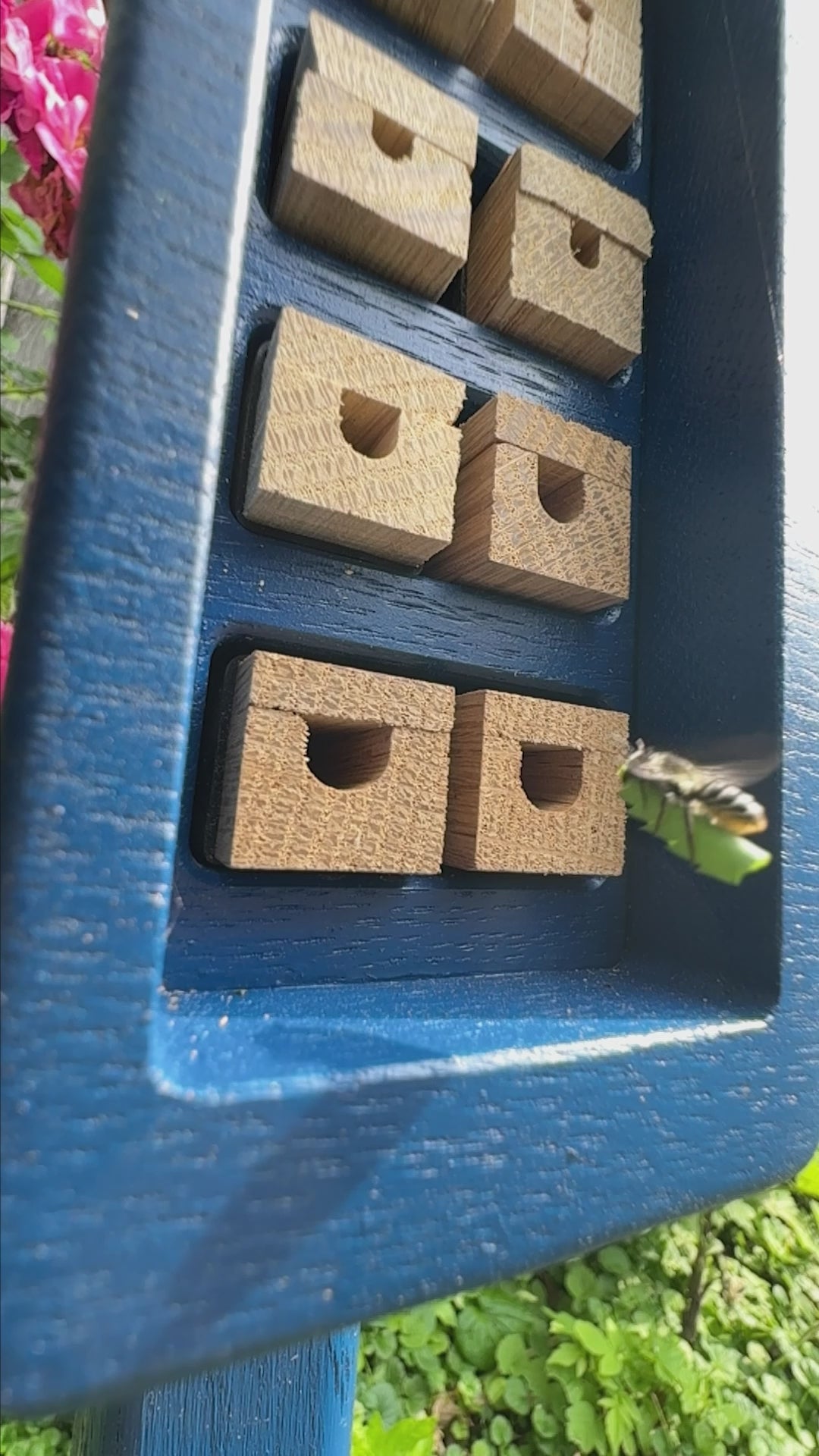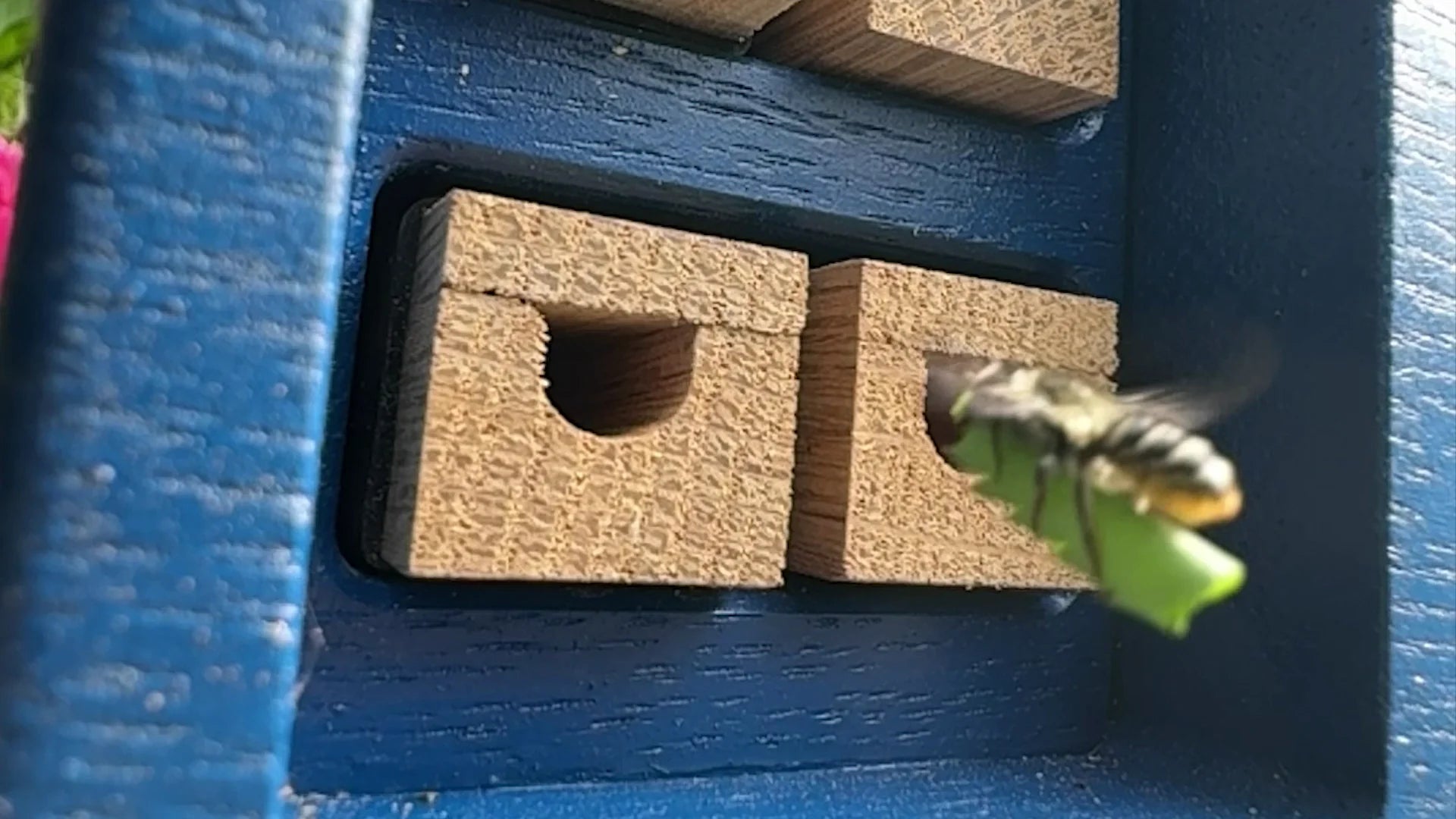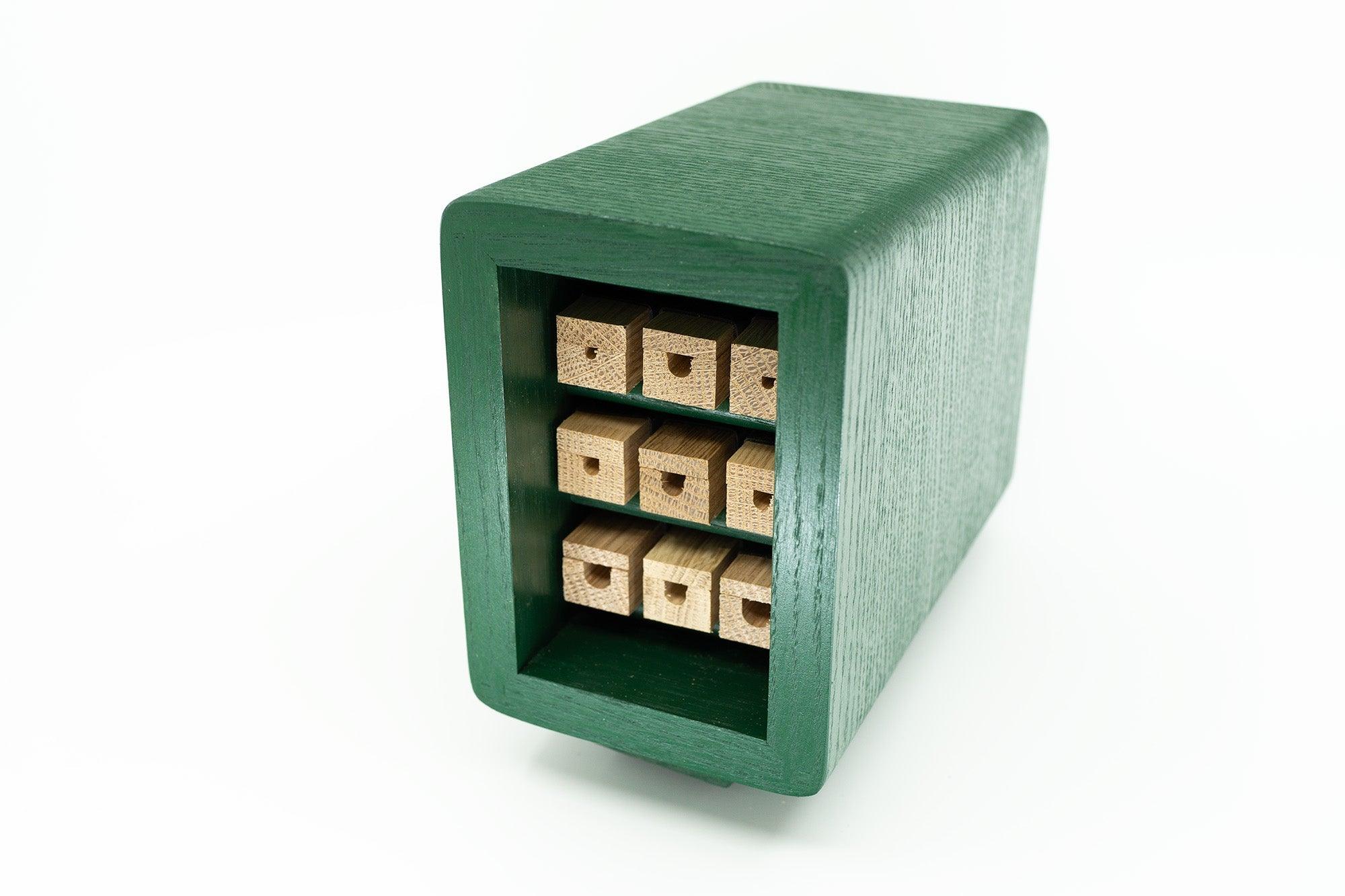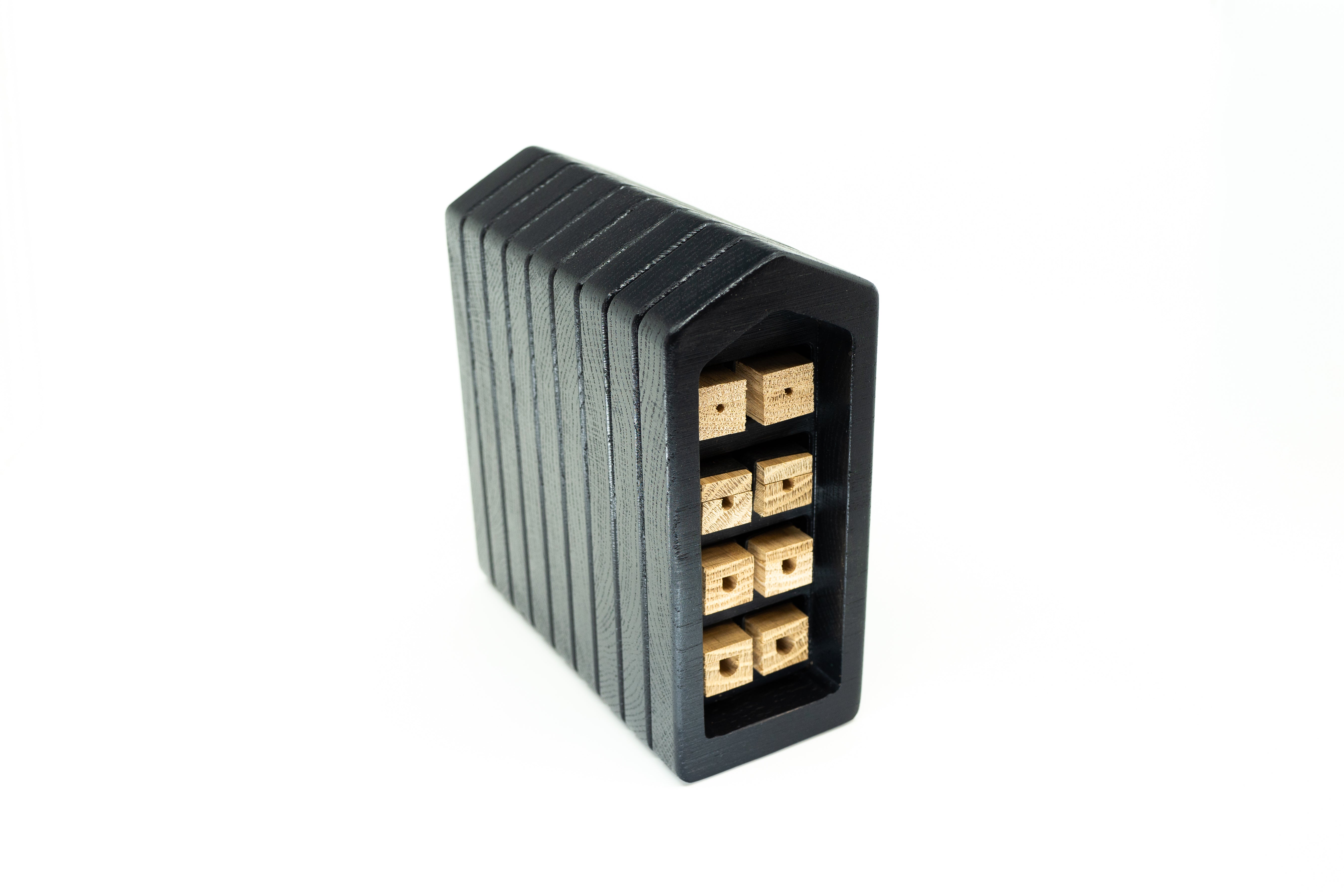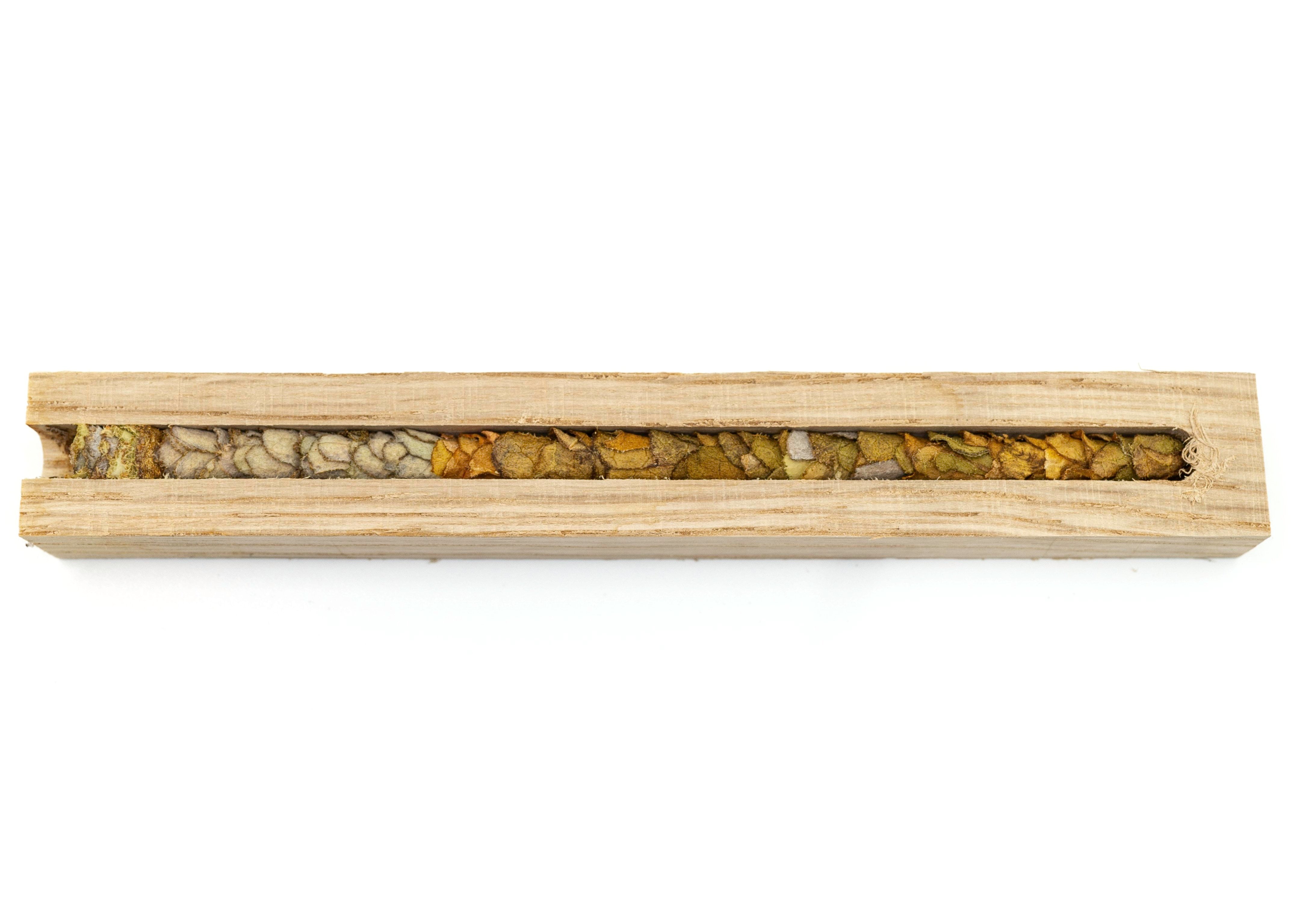Guided by research and built to last. A timeless design that is wonderfully easy to maintain.
Our bee homes were created alongside entomologist and wild bee expert, Dr. Jessica Forrest, following all currently known best practices and research. We don't think you'll find a better home anywhere.
Each of our homes are made of the longest lasting domestic hardwood for outdoor use: white oak. They are treated with long-lasting, outdoor finishes that are safe enough to be used on children's toys. You'll have your bee home for so long you'll be passing it on to your grandchildren.
Carefully Crafted Design
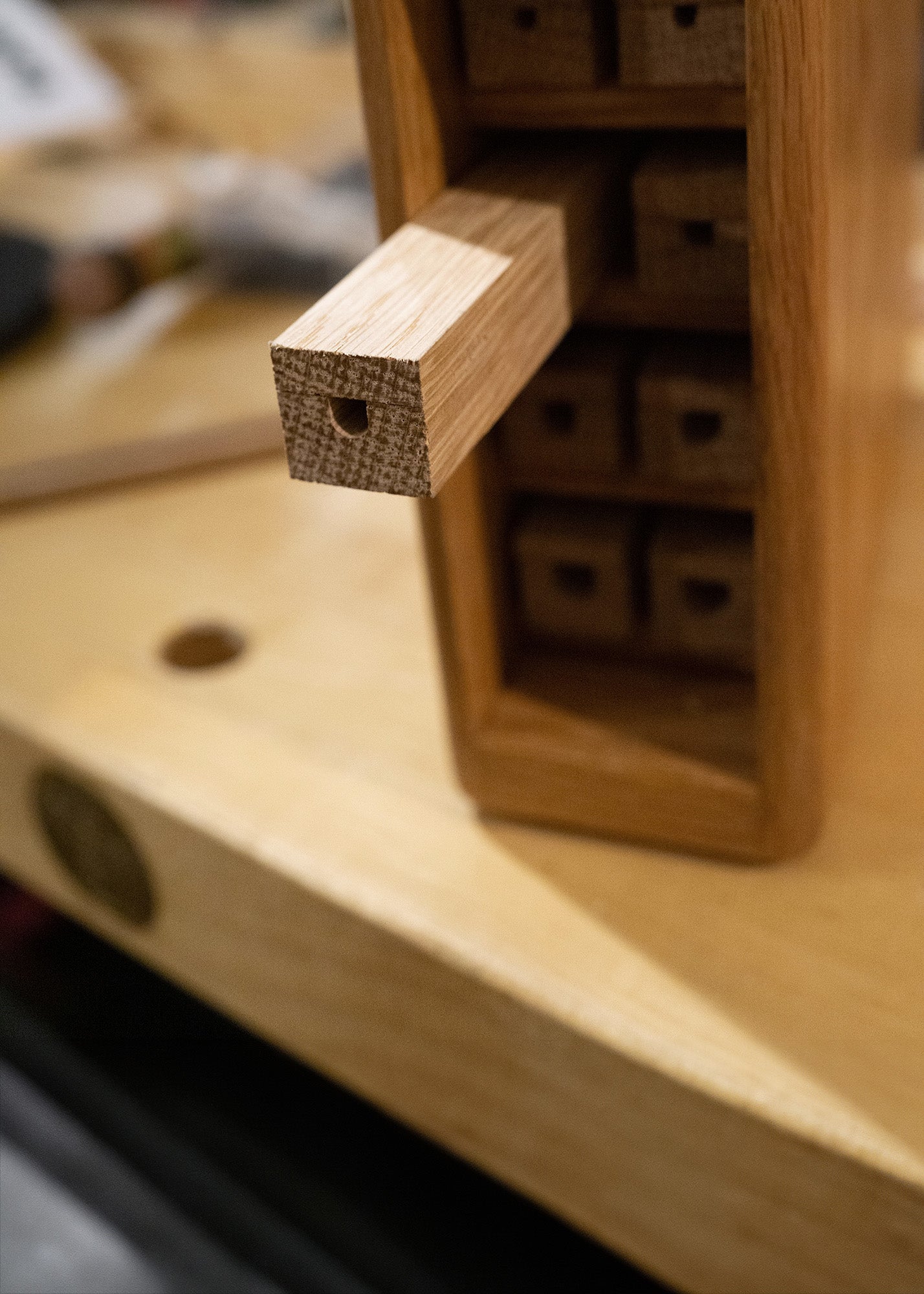
Removable, Easy to Clean Bee Blocks
Left exposed, a bee home can quickly turn into a bird feeder.
By making it easy to remove and place each block in a safe location after it is closed up, we reduce the exposure time and increase the chances that the young bees will make it to adulthood.
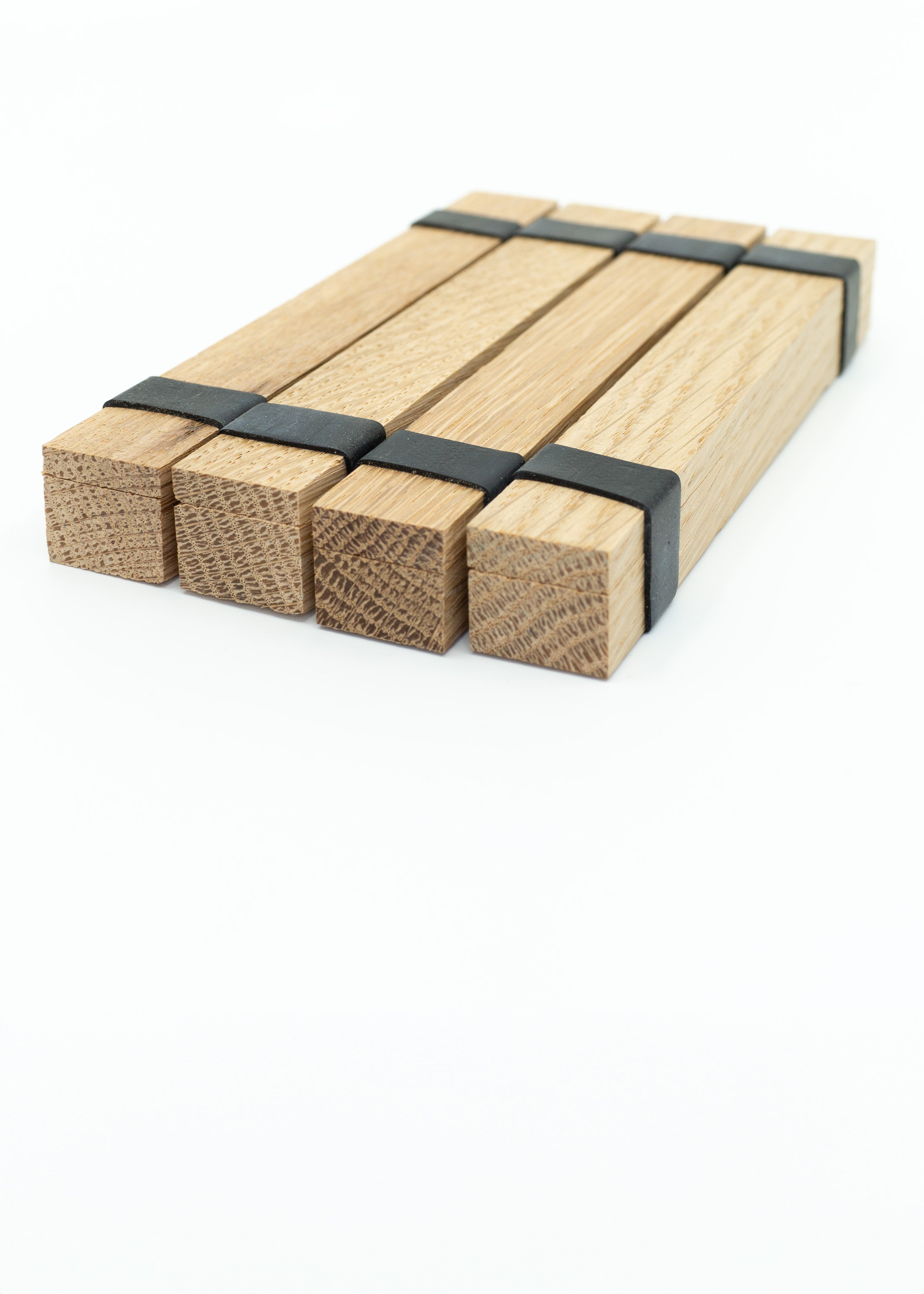
Parasite-Resistant Nests
Paper and bamboo nesting sites can be easily punctured by certain parasitic wasps, allowing them to lay their eggs through the wall and take over the nest.
All of our nesting blocks are made of solid white oak, and have no way in for parasites once the mother bee seals the front.
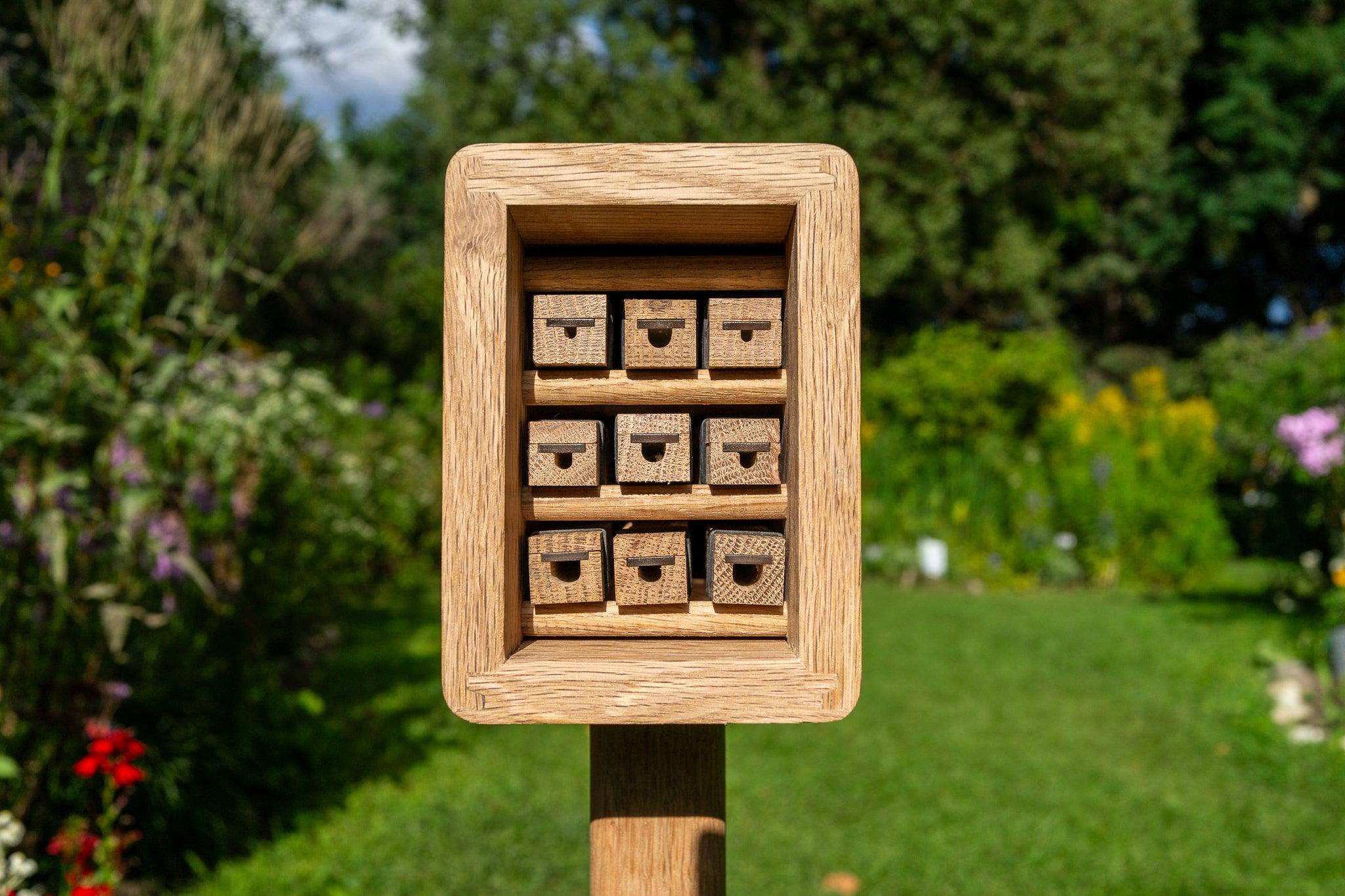
Low-Density For Bee Health
A large number of nesting sites in one location becomes an all-you-can-eat buffet for parasites.
By keeping the number of nesting sites low, we reduce the chances (though can't guarantee) that the nests will be invaded by parasitic wasps, flies, or beetles.
Best of all, this means there's no need to regularly clean out the blocks. (But you still can if you want to.)
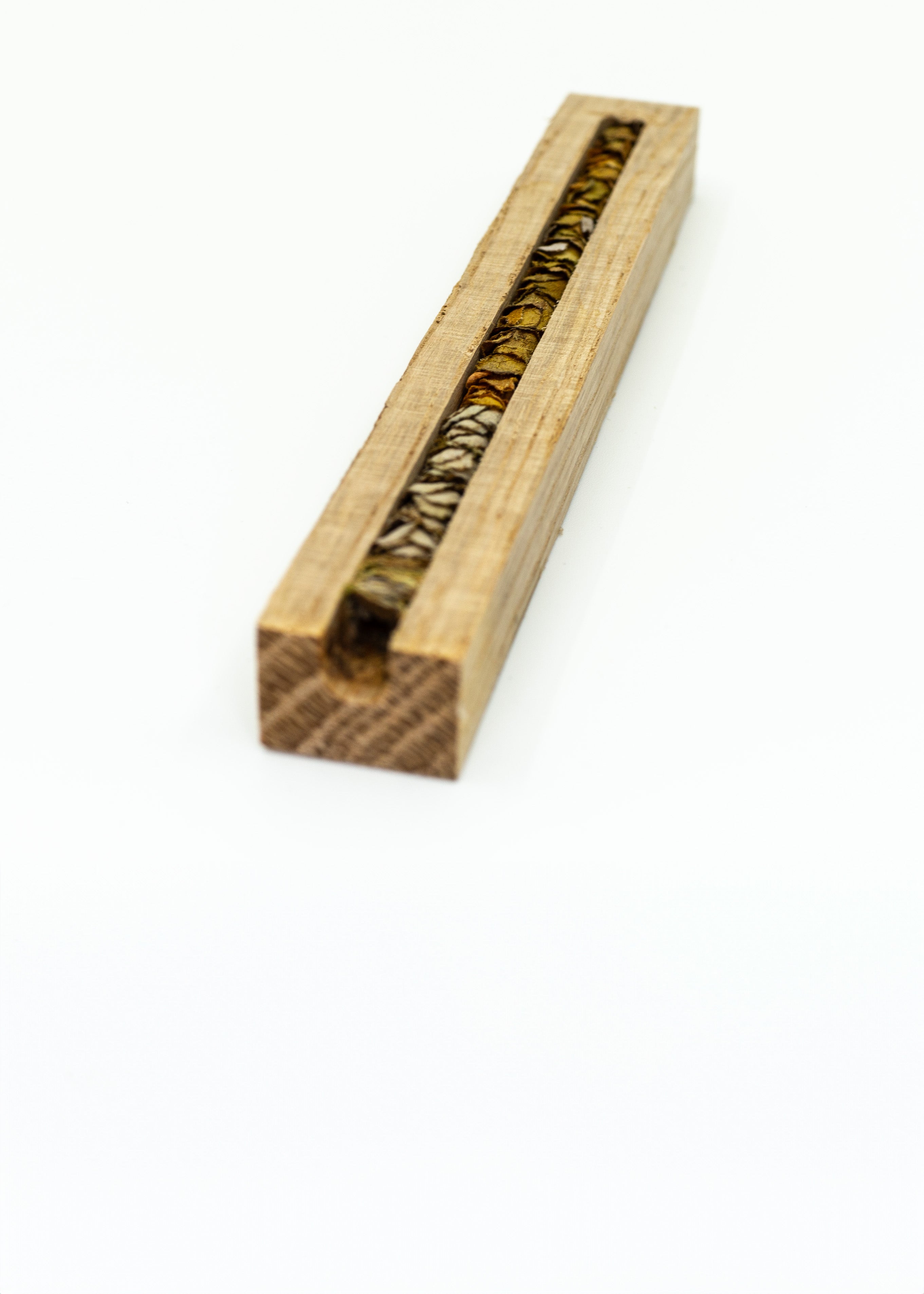
Deep Nesting Sites
Poorly designed insect hotels often come with shallow nesting holes. This can result in the mother bees laying mostly male eggs, which can negatively impact the population the following season.
All of our nesting blocks have 5.5 inch deep holes in a range diameters. They aren't easy to make, but it's the right thing to do.
Built to Last
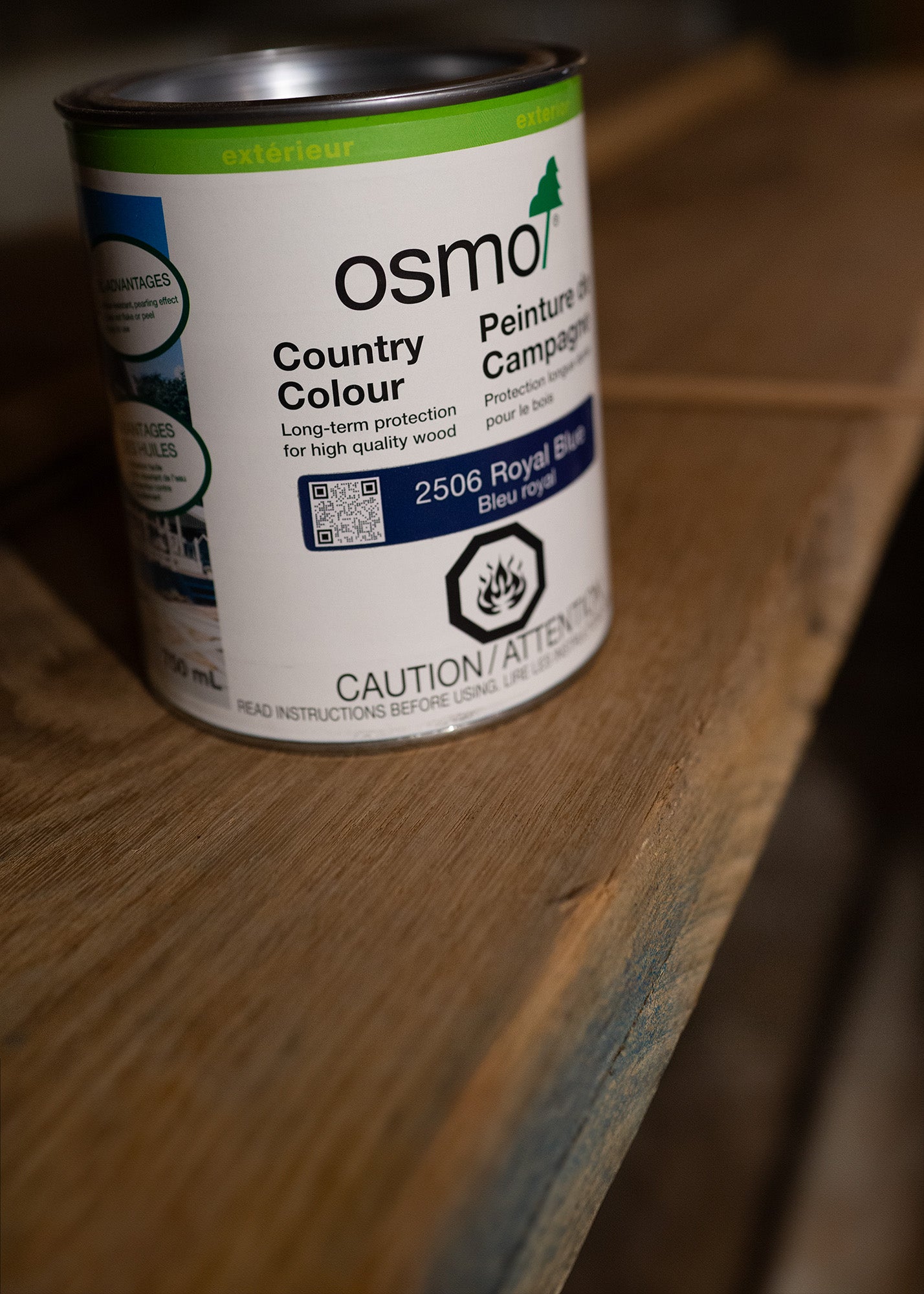
Solid Oak + Safe Outdoor Finish
All of our homes are built from solid white oak. On its own, white oak can last two decades or more. But then we treat it with Osmo Country Colours or decking oils: outdoor finishes safe enough to eat, but guaranteed never to flake or peel like a polyurethane.
Best of all, they're easy to maintain. After 3-5 years, just add another coat - no sanding required.
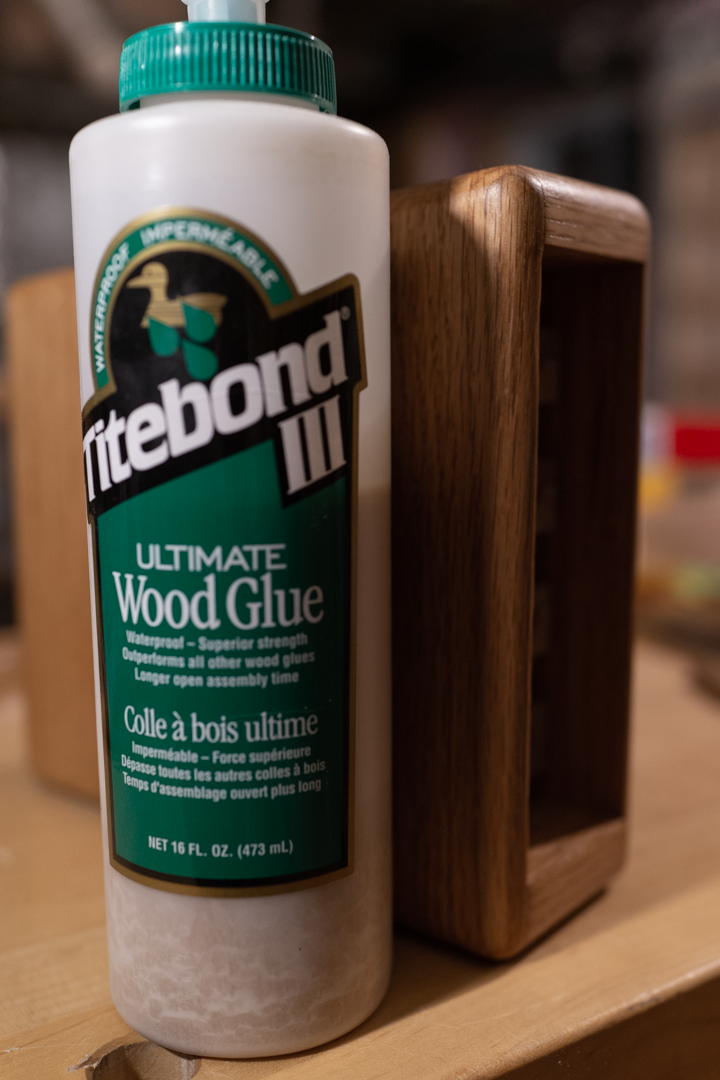
Waterproof Wood Glues + Joinery
You won't find a single nail holding any piece of our homes together. It is assembled entirely with joinery and waterproof wood glues that are stronger than the wood itself.
If there's nothing to rust, there's nothing to wear out or ruin the finish.
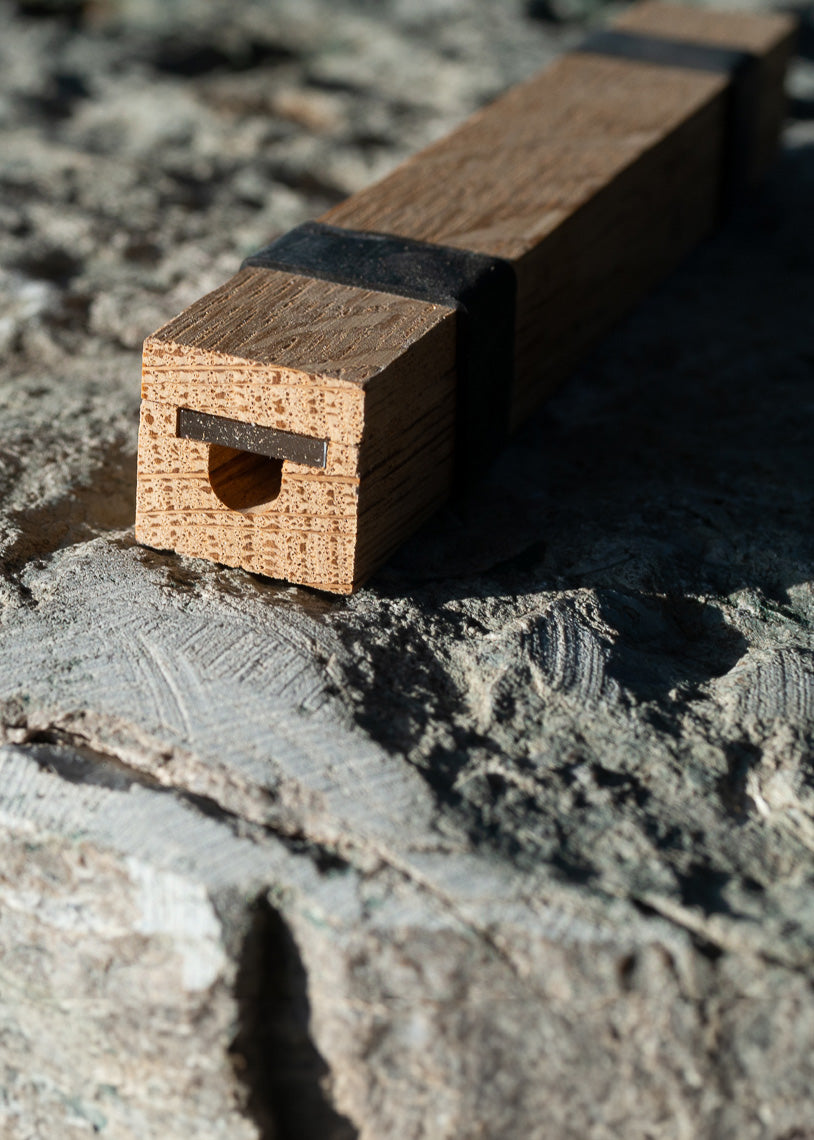
UV Resistant Rubber Bands
To make it possible to view or clean the nesting blocks, we use UV-resistant rubber bands to hold each block closed.
These bands are designed to last for decades outdoors, but will eventually biodegrade if abandoned.
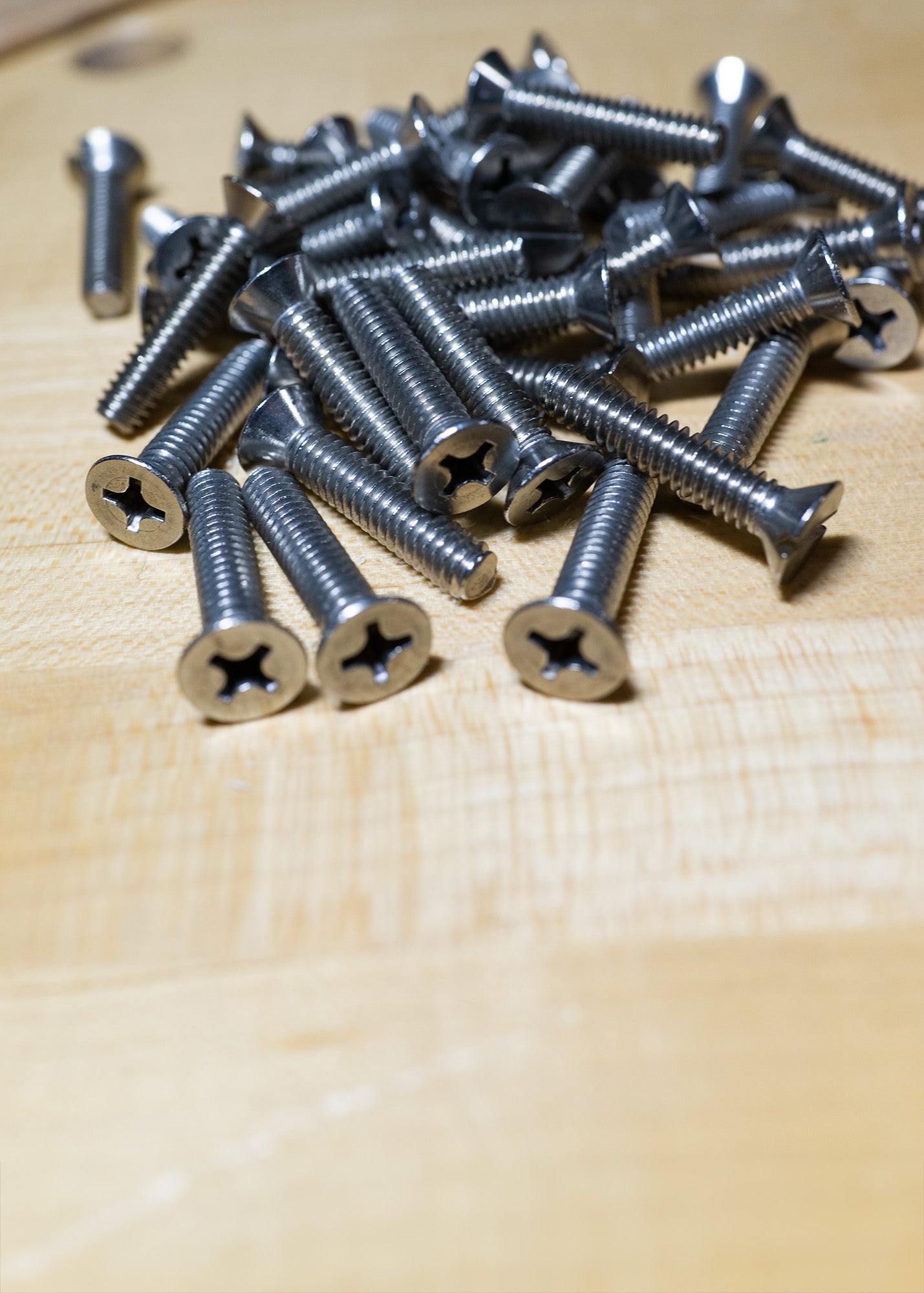
Stainless Steel and Coated Hardware
Our mounts are attached to the bottom of the home with a single stainless steel bolt, tapped directly into the wood. You never have to worry about it corroding and ruining the look of your finish.
To make it easy to attach to an existing wooden structure, we also provide two decking screws that go into pocket holes hidden underneath for a clean look. These screws are coated for outdoor use.
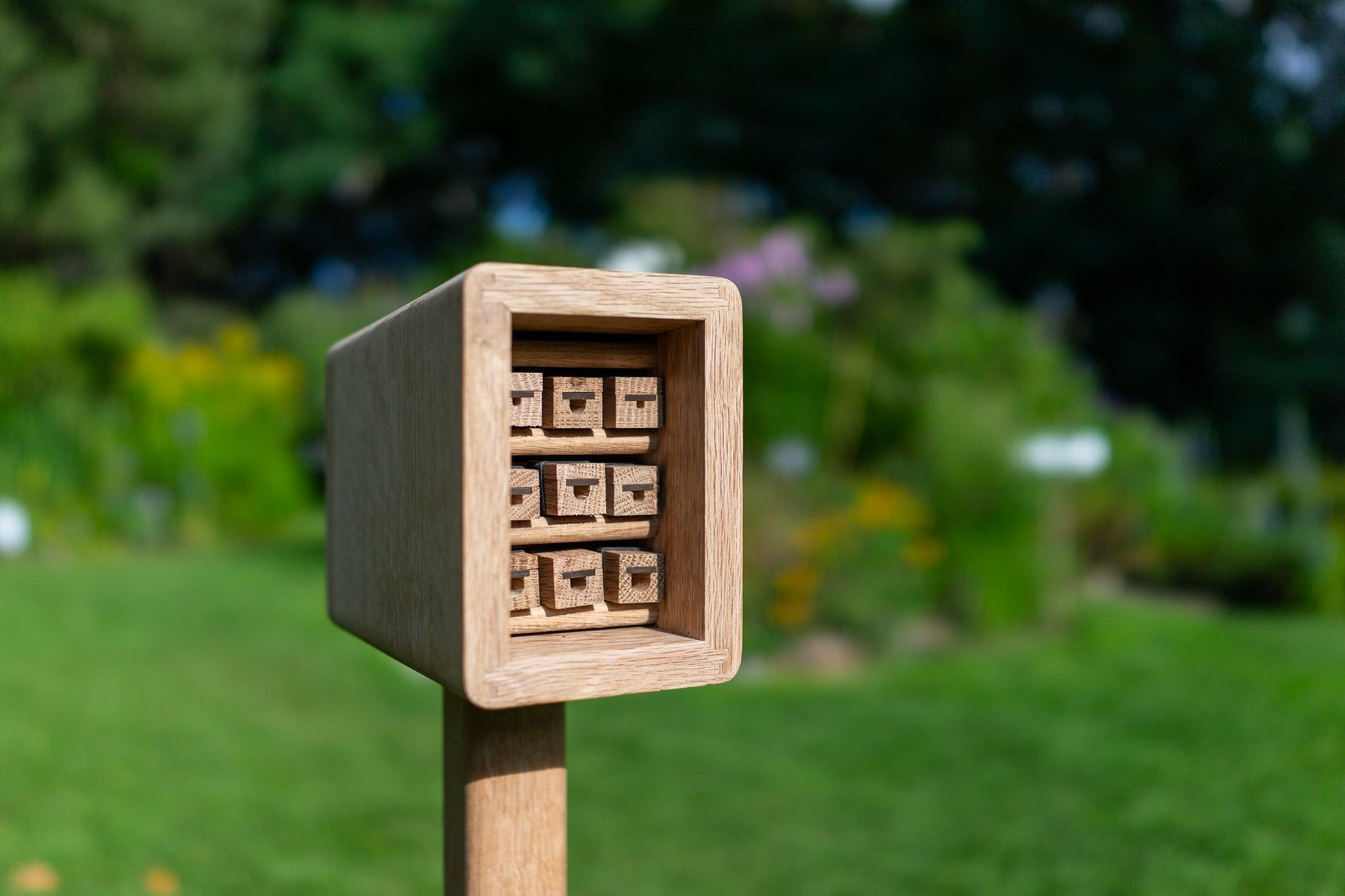
Small But Mighty
Unlike a large honey bee hive, wild bee homes contain only a handful of wild, non-aggressive pollinators.
We intentionally keep the number of nesting sites in our homes small. Rather than base our design off those used in agriculture which require considerable maintenance to keep the population healthy, we based ours on the time-tested approach used by research scientists to study wild bees.
With only a handful of nesting sites, you can monitor nature without having to worry about whether mites and parasitic wasps are growing out of control.
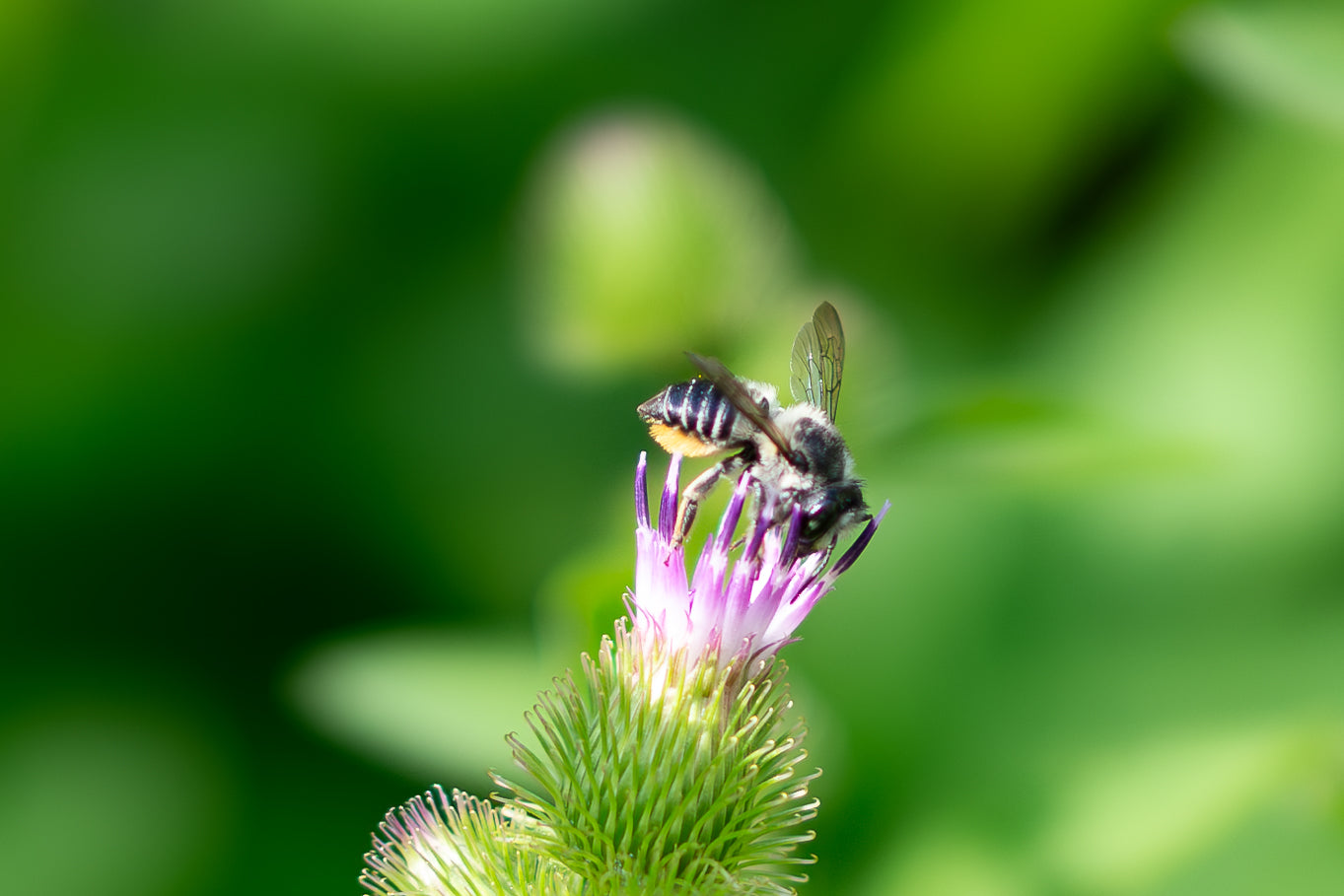
Definitely not for honey bees
While there are 8 honey bee species in the world, there are about 20,000 others, with over 4000 in the US alone.
Unlike honey bees - which are a domesticated European species - many of our wild bees live solitary lives, with one mother bee building a nest for her young. In addition, honey bees can actually suppress native bee populations.
Our bee homes are built specifically for those bees referred to as "cavity nesters", which usually find their homes in holes in dead wood.
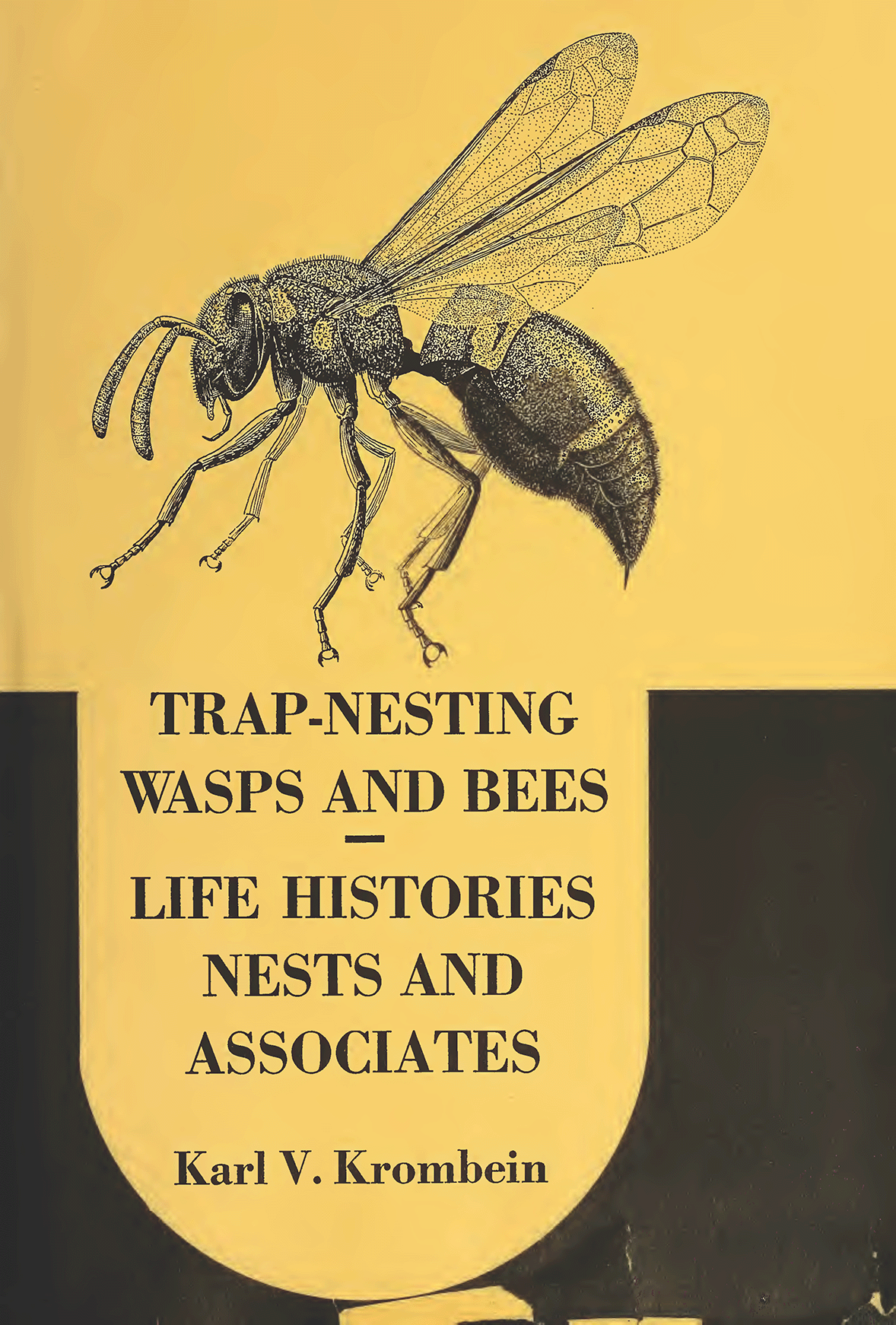
A "Check Engine" Light for Your Yard
Introduced in Karl Krombein's 1967 book Trap-Nesting Wasps and Bees, nesting blocks like those in our homes have been an invaluable tool for anyone looking to house and observe some of our most critical wild pollinators.
Properly designed and placed, nesting blocks help you to understand which species of solitary, cavity-nesting bees you have, and whether their populations are healthy. If this home remains empty, it should set off alarm bells and point to a need to plant more wildflowers or other flowering plants in your yard.
In areas where we often clear dead wood and other natural sources of nesting sites, nesting blocks like ours ensure there is a base level of nesting sites for cavity-nesting bees. As a nice side-benefit, these bees help to pollinate plants up to a 300m radius around where they live.
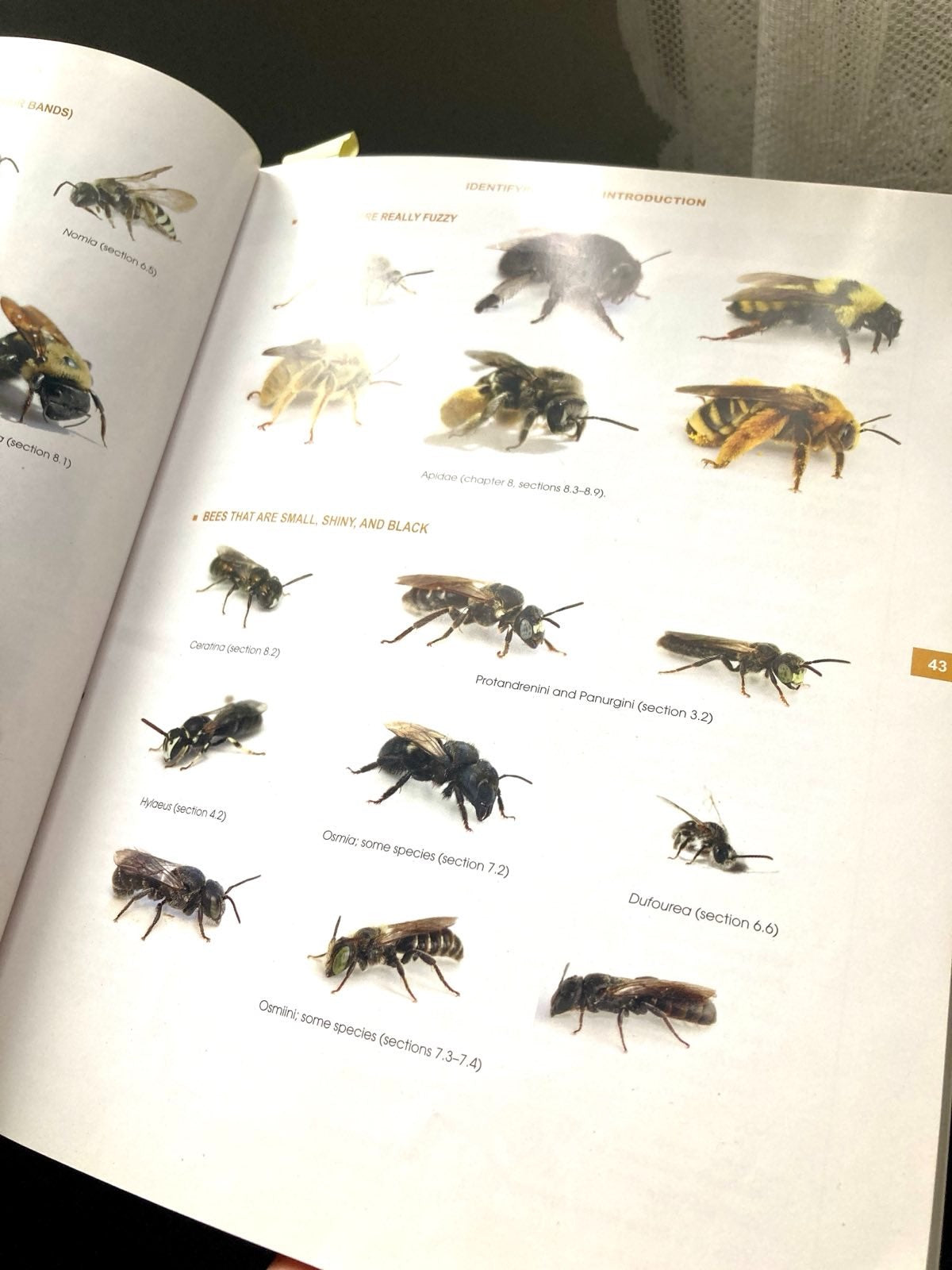
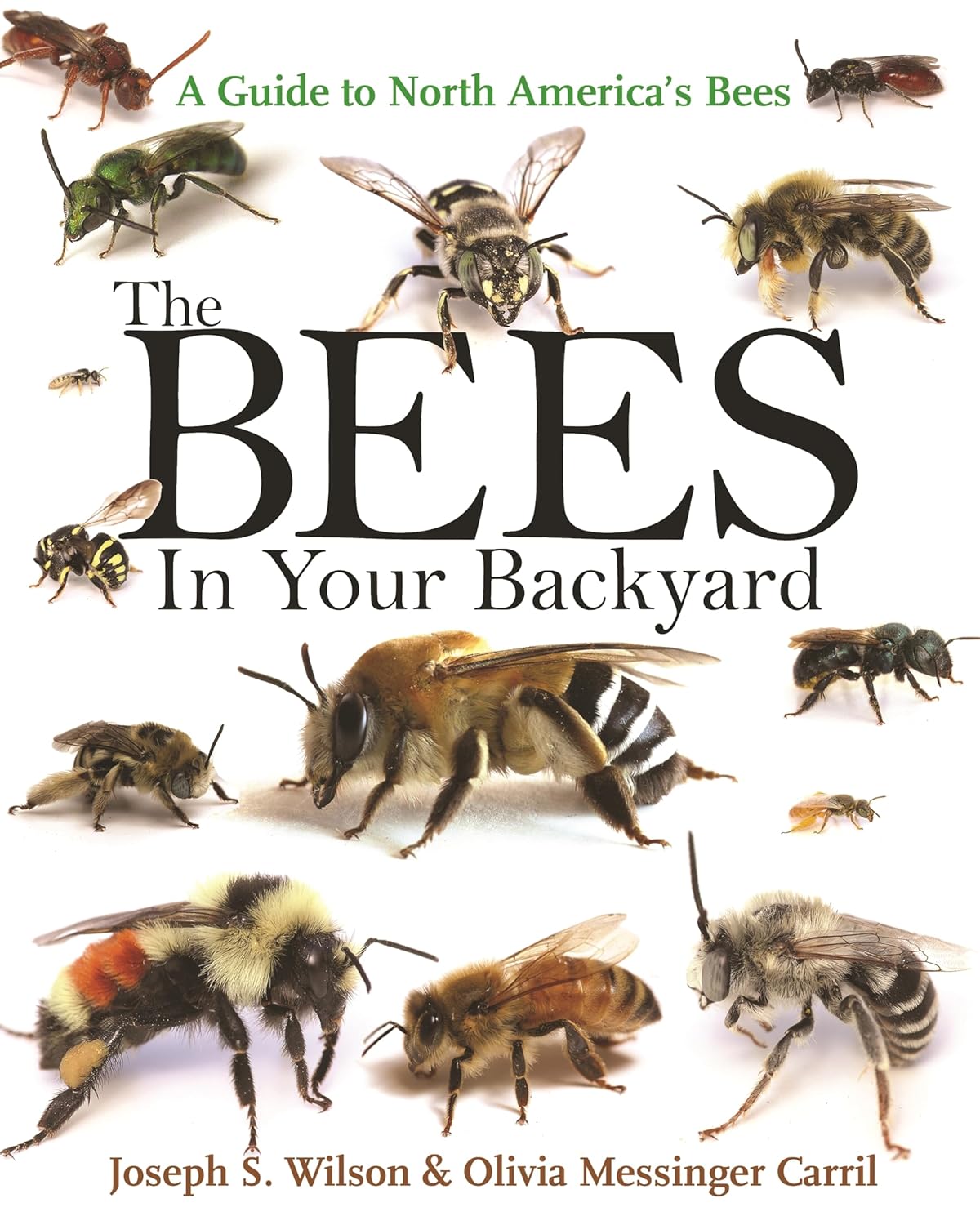
Learn More About Wild Bees
The book The Bees In Your Backyard is an amazing resource for both novices and experts. If you're looking to understand the native bees in your area and which things to grow to best support them, this is the perfect place to start.

